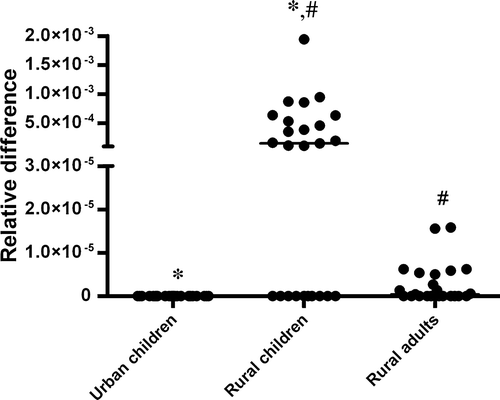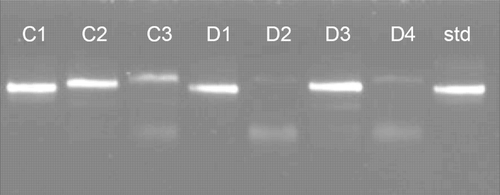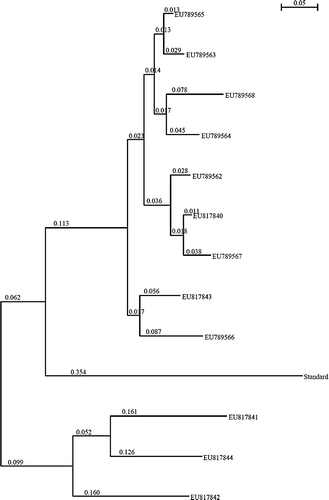Figures & data
Figure 1. Quantitation of fecal B. fibrisolvens levels in the three study groups. Amplification of specific rDNA was expressed relative to the amplification of universal rDNA sequence and is shown as relative difference. The individual values are represented for each participant and the median value is shown by the bar. *p<0.001, #p<0.05.

Figure 2. TTGE profile of B. fibrisolvens from human feces, cow dung, and standard strain. A single band was noted.

Figure 3. Phylogenetic mapping of the Butyrivibrio amplicons from this study. GenBank accession numbers EU789562, EU789563, EU789564, EU789565, EU789566, EU789567, EU789568, and EU817844 represent amplicons obtained from feces of rural children. EU8171840, EU817481, EU817842, and EU817843 represent amplicons from cow dung.
